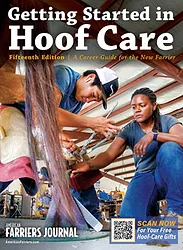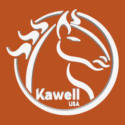On the first day of class, Bob Smith makes two important points to his Pacific Coast Horseshoeing School students.
“I tell students, ‘If you don’t like shoeing horses, it’s going to be a horrible way to make a living,’” the International Horseshoeing Hall of Fame member recalls with a smile. “Then I tell them that it’s a lifetime of learning.”
Smith isn’t telling tales outside of school, either. A primary farrier education is no different than attending a trade school to become a welder or an electrician. You’ve taken the first step, but you’re going to need some practice. Perhaps Smith explains it better with his swimming analogy.
“After the end of the program, we take you to the edge of the cliff and we push you into the little lake,” he says. “The only thing we’ve taught you to do is the doggy paddle. We’re trying to keep you from drowning. You learn how to go in different directions, change speeds, the breaststroke, and the backstroke while continuing your education after you leave school.”
Help is Here
The farrier industry is a collection of incredibly generous people who are armed with valuable experience and the willingness to share it with you. There’s no greater example than the knowledge and advice that you will find within the pages of this 15th edition of the American Farriers Journal’s Getting Started in Hoof Care.
The valuable information you will read comes from knowledgeable hoof-care professionals who have invested their lives in this industry. They don’t sugarcoat the tasks ahead as you embark on your career in farriery.
You will find advice on the hurdles you face, what to expect as your business matures and strategies for a profitable hoof-care practice.
Operating a small business will have its share of land mines. You might find that you are having difficulty finding the right clients, how to set your prices, managing finances, and handling tough cases. You’ll find answers to these questions and more in this issue.
Keep Learning
While you are new to the industry, you have important responsibilities within it. You must continue learning, improve your skills and respect your trade. Reading this magazine is a good start, but there’s so much more available to you. Join a farrier organization, get to know others in the trade, attend clinics and conferences, and above all, ask questions.
American Farriers Journal is your magazine and educational ally.
Jump on in. The water is fine.








